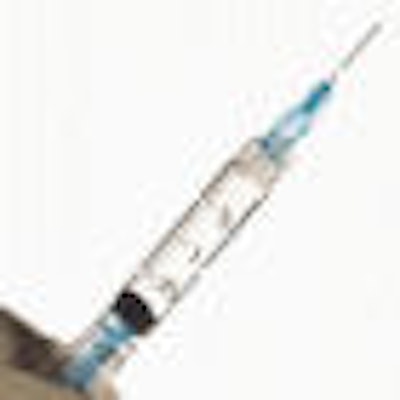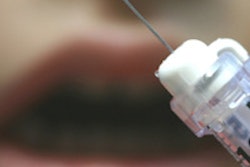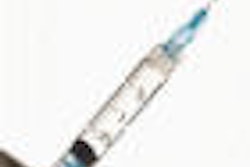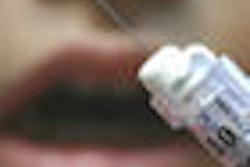
The root cause of local anesthetic-related neurosensory disturbances (NSDs) in dentistry has been unclear. But now a group of Danish researchers say it is neurotoxicity related to high-concentration formulations of anesthetics -- particularly articaine -- not needle penetration (Journal of the American Dental Association, May 2011, Vol. 142:5, pp. 531-540).
Lead study author Søren Hillerup, DDS, PhD, DrOdont, a professor of maxillofacial surgery at the University of Copenhagen School of Dentistry, and colleagues used comprehensive national registry and clinical data to conduct a study of adverse drug reactions -- particularly NSDs -- associated with local anesthetics used in dentistry
Estimates of NSDs stemming from local anesthesia have varied wildly, from 1:750,000 to 1:42. The researchers cited previous studies that suggested three harmful mechanisms:
- Mechanical injury to the nerve caused by a needle
- Mechanical injury that resulted in intraneural bleeding, hematoma, and granulation tissue formation, with constrictive scarring, hypoxia, or both
- Neurotoxicity from local anesthetics
The study included three datasets: annual sales of local anesthetics (from 1995 through 2007), 292 reports of adverse reactions to local anesthetic drugs to the Danish Medicines Agency (DMA) -- Denmark's equivalent to the U.S. Food and Drug Administration, and a clinical sample of 115 patients with NSD associated with local anesthetics. The authors assessed lidocaine (2%), mepivacaine (2% and 3%), prilocaine (3%), and articaine (4%) sold in cartridges.
The DMA's sales volume figures led to interesting findings about relative risk: For articaine versus the drugs in relation to market share, it ranged between 3.1 and 8.6. An antiarticaine campaign took place in the summer of 2005, so the researchers performed a calculation from 2001 through 2004 and found that NSDs related to articaine occurred 6.2 times more often than from all the other anesthetics. In the entire study, articaine-related NSDs were five times more frequent than from the others.
The DMA also provided the second dataset -- the national database of local anesthetic-related adverse drug reactions for the same time period. By law, suspected or confirmed reactions must be reported by healthcare providers to the DMA. Updated data from 292 patient reports pertaining to adverse drug reactions from local anesthetics were analyzed. Of those, 182 cases or 62.3% stemmed from articaine-based local anesthesia.
The final data source was a clinical sample of patients recruited from two different hospitals during the same time period. In all, 115 patients who had NSD in one or more oral branches of the trigeminal nerve after receiving local anesthesia were included in the study. Patients whose condition may have resulted from surgical, endodontic, or implant procedures were omitted. In that dataset, researchers observed a jump in NSD cases after 2000, when 4% articaine was first introduced.
They found that NSDs associated with 4% articaine were significantly overrepresented, especially with mandibular blocks.
The researchers also found the occurrence of double injuries "highly significant." Of 11 patients with permanent NSDs, two trigeminal branches were affected simultaneously via an injection in one site. One had received lidocaine and 10 received 4% articaine. Articaine, which held a 41.2% market share, was overrepresented, they noted, lending further evidence that the substance is the causative agent.
"The distribution of NSDs was disproportionate to the market share of three of the four drugs in both national registry and clinical data," the researchers wrote. "These findings indicate that the main cause of injury was neurotoxicity resulting from administration of the local anesthetic rather than the needle penetration."
As a result, clinicians may want to avoid using 4% anesthetic formulations for block anesthesia in the trigeminal area when "viable alternatives" are available, they concluded.



















